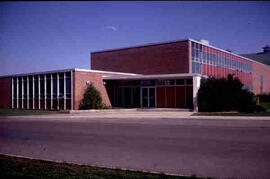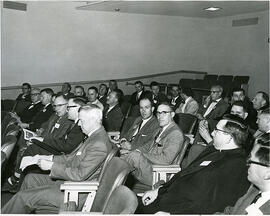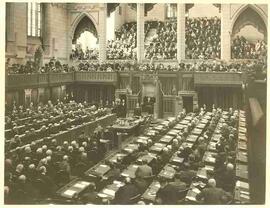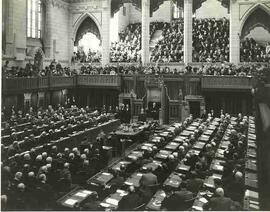Head and shoulders image of Annie Colley, Extension.
Bio/Historical Note: Ann (Annie) Colley was born 3 October 1912 in the Bergheim Lutheran community north of Saskatoon. Her primary education was at Bergheim School and secondary schooling at Lutheran College and Seminary in Saskatoon. Colley obtained a teaching certificate in 1932 and taught for five years. Moving to Saskatoon, she worked for nine years as a dressmaker with a department store. She graduated in 1964 from the University of Saskatchewan with a BSc in Home Economics and a BEd, followed in 1969 by a Diploma in Continuing Education. A major contribution to rural Saskatchewan was Colley’s work with Indigenous women, representing women on 44 reserves. In three years more than 1,700 took courses taught by instructors trained at the university. These local instructors attended short courses in home management, nutrition, food preparation, money management, knitting and sewing. With financial backing from Saskatchewan Women’s Institutes, Colley and her husband obtained and refurbished over 200 used treadle sewing machines. These were presented to women who had completed 60 hours of training. Many Indigenous women learned basic homemaking skills from their own instructors. Aside from her work with natives, Colley provided Homemakers’ clubs, 4-H clubs, Women’s Institutes and agricultural societies with courses in consumer education, nutrition, home management, family life education and clothing and textiles. One of her chief concerns was money management in the family. Colley initiated and produced the first University of Saskatchewan television series on major issues of land use, transportation and energy in 1977. These were seen from six television stations in Saskatchewan. In the mid-1970s Colley conducted courses in retirement education from the university. She served a term as president of the Saskatchewan Home Economics Association and was an active worker in Saskatoon community organizations, including Friendship Inn, the Canadian Red Cross and Orpheus 60 Choir. On retirement in 1978 Colley took a two-year assignment in Botswana to teach native women nutrition, sewing, leadership, home management and money management. The Annie Colley Trust for University of Saskatchewan is awarded in Colley’s honour by the Saskatoon Community Foundation.









